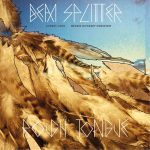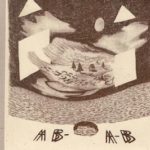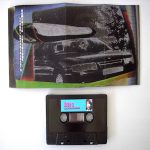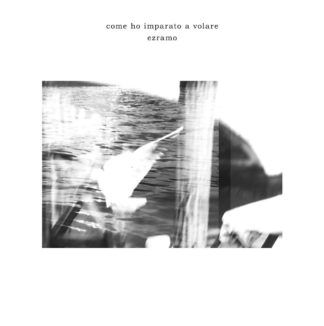Come Ho Imparato A Volare
18,00 € VAT Included
In stock
“Ezramo learns how to fly!
The starting point of this record is Ezramo’s high–profile exhibition „come ho imparato a volare“, shown in 2009 at Tresor – Spacefor ephemeral arts in Stuttgart. From 2009-2010 Ezramo developed her composition of the same name. During this period, Ezramo’s studio seemed to be an insectological laboratory, as the main sounds, she was working with, were recordings of larvae of the fly Sarchophaga Carnaria. The theme of the album is transformation. And also the geographical distance between Stuttgart and Berlin correlates with the evolution, which the sounds made during the two years.
Bell toll seem to ring in the album’s first track Les jeux sont faits, (the die is cast) inhuman, animal like sounds are layered over disharmonic rhythms of a detuned zither, the die is cast! Larve Giovani (young larvae) is a vibrating meditation of bells, field recordings of eating and moving larvae and Ezramo’s voice. This gnashing piece is followed by Un pianoforte solitario (a lonely piano). The eponymic solo piano plays a bumping four-quarter time and gently guides the listener to the locked-groove at the end of side one. The raw recordings of larvae in Dreaming in the cocoon are assembled to veritable drones between white noise and minig sounds on their way to extinction. It’s sudden ending seamlessly merges into the second piano piece of the album last canone before flying, which again shows earworm qualities, but leaves its loveliness behind as it turns into a hyped-up multilayered canon. Almost a radio play is the last track Singing in the night of the resurrection. Field Recordings of a south Italian Easter procession are mixed up with German voices, starting airplanes, train announcements and fleeing paces. After an intense final, we’re reaching the end of Ezramo’s journey, the newly hatched flies are humming disoriented through the room and escape throughout the window in spring’s air. The fleetingness of Ezramo’s earlier exhibition work is now fixed in vinyl, despite their partly aesthetic weight, the six tracks stay in a well balanced limbo.
Once again, the cover artwork is of the best quality. Compared with the massive materials of the first release, this time it’s dominated by light graphics on white structured paper. The multi exposed cover photo shows Ezramo’s visual, photographic talent. If the gatefold cover is opened, it shows a surreal, religious poetry.”














